
Epoxy adhesives have been found to have a lower degree of shrinkage in comparison to other reactive polymeric adhesive systems. It is important to note that even 100% reactive formulations exhibit some shrinkage upon curing. To lower the rate of shrinkage a variety of fillers including aluminum powder, silica, calcium carbonate, aluminum oxide can be added to the formula. Volumetric and linear shrinkage will be dramatically reduced in comparison to unfilled epoxy resin materials. The use of these fillers while lowering the degree of shrinkage can alter the performance properties of these compounds. They can also significantly increase the viscosity of these materials which will effect the dispensing characteristics of these products. Different types of curing agents are used for specific grades to satisfy the most desirable low shrinkage requirements in many applications.
The value of low shrinkage adhesives can not be underestimated and will have a direct impact on the longevity/effectiveness of bonded joints under multiple environmental conditions. They provide exact alignment, minimize stress which can cause cracks/voids in the bond line and offer optimization in reliability upon long term aging. Higher shrinkage can occur during heat cure polymerization because of the increased cross links density from thermal exposure during cure. Master Bond has made notable progress in developing new adhesive compositions to decrease polymerization shrinkage stress. Silicone adhesive systems have been often employed in delicate electro optic bonding on account of their minimal shrinkage rates, even lower than many epoxy products. Additionally low shrinkage UV/visible light cure adhesives deliver fast cures for high volume assembly usage.
Master Bond Adhesives Providing Low Shrinkage
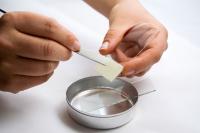 |
EP42HT-2LTE Ultra low coefficient of thermal expansion. Two component, room temperature curing epoxy. Reliable electrical insulator. Unsurpassed dimensional stability. Low linear and volumetric shrinkage upon cure. Serviceable from -60°F to +300°F. Withstands 1,000 hours 85°C/85% RH. |
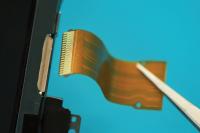 |
EP13LTE One component, heat curable epoxy adhesive. Serviceable from -60°F to +500°F. Paste viscosity. High tensile shear and compressive strength. Chemical resistant. Machinable. Low coefficient of thermal expansion. Meets NASA low outgassing standards. |
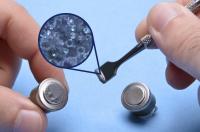 |
EP21SC-1 High performance, abrasion resistant epoxy system. Silicon carbide filled compound. Convenient one to one mix ratio. Resists thermal cycling and many chemicals. Exceptional bond strength. Low coefficient of thermal expansion. Excellent electrical insulation properties. Paste consistency. Serviceable from -60°F to 250°F. |
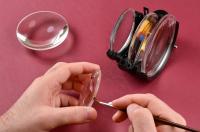 |
UV22DC80-1 Dual cure system with UV and heat curing mechanisms. Cures at 80°C in shadowed out areas. Nano filled, high dimensional stability and abrasion resistance. Bonds well to metals, glass, ceramics and most plastics. Serviceable from -60°F to +350°F. |
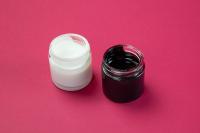 |
EP51CC Easy to apply, paste like consistency two component epoxy adhesive. High bond strength. Can be packaged for use in field applications. Serviceable at cryogenic temperatures down to 4K. |
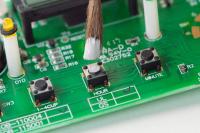 |
EP21AO Room temperature curing thermally conductive/electrically insulative epoxy adhesive. Convenient one to one mix ratio, weight or volume. High bond strength. Adheres well to metals, composite, ceramics, glass, rubbers and most plastics. Superb dimensional stability. Serviceable from -60°F to +250°F. |
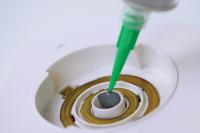 |
EP21QF Two component, moderate viscosity epoxy. The service temperature range is -80°F to +300°F. Color coded for easy mixing. Good physical strength profile. |
 |
EP21TDCAOHT Flexibilized two component epoxy offers thermal conductivity/electrical insulative properties. High peel/shear strength formulation. Paste viscosity. Will not drip on vertical surfaces. Bonds well to dissimilar substrates. Serviceable from -100°F to +350°F. |
 |
EP29LPSPND-3 Two part epoxy system with paste consistency and remarkable cryogenic properties. Withstands rapid drop in temperature. Long working life. Low exotherm. Excellent resistance to acids, bases and many solvents. Outstanding electrical insulative properties. Service operating temperature range from 4K to +250°F. |
